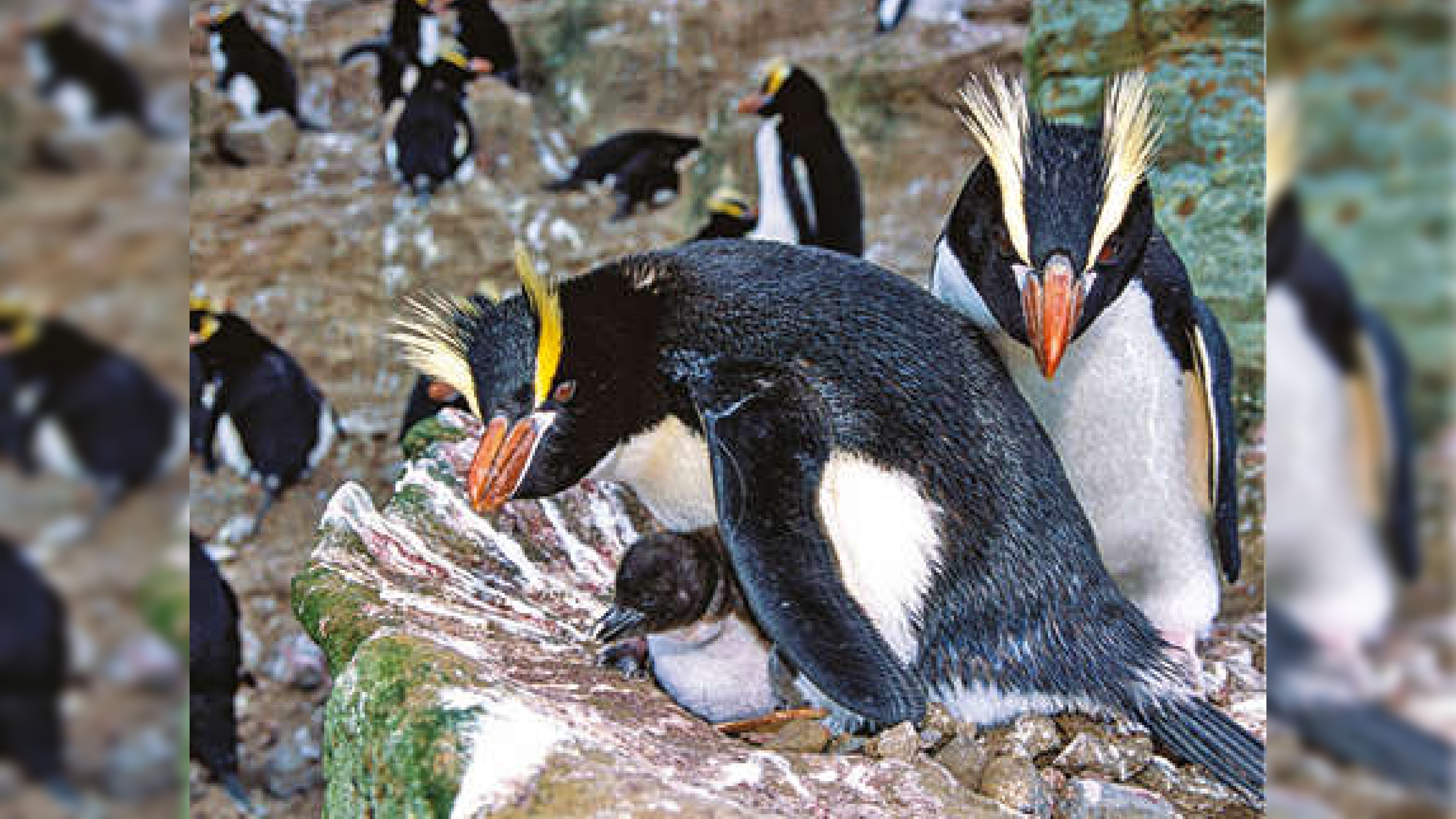Natural selection For isolated penguins, two eggs are not better than one
All species of crested penguin lay two eggs in a breeding season, a smaller first egg and a larger second egg, though this size difference is most extreme in erect-crested penguins.

In 1998, a team of researchers made the 3 1/2-day journey to the isolated Antipodes Islands in the South Pacific to study one of its few residents: the enigmatic and endangered erect-crested penguin.
“These are really the forgotten penguins,” said Lloyd Davis, a biologist and science communicator at the University of Otago in New Zealand, who led the team almost 25 years ago. “No one knows virtually anything about them.” The modern plight of these birds inspired Davis, after decades of working in science communication, to revisit the data he and colleagues gathered in 1998. The results of their research were published on Wednesday in the journal PLOS ONE, chronicling the birds’ demographics and unique parenting style — including neglecting, and in some cases killing, potential chicks. To describe the penguins’ native Antipodes Islands and nearby Bounty Islands as harsh would be an understatement almost as severe as the landscape itself. Known in the Maori language as Moutere Mahue (Abandoned Island) and Moutere Hauriri (Island of Angry Wind), they are technically part of New Zealand, though they sit hundreds of miles off its southern coast. The islands have “a sort of bleak beauty,” said Davis. Aside from steep cliffs and severe winds, the only inhabitants of the islands are the penguins and other seabirds.
The research team arrived at the Antipodes Islands in September 1998 and stayed through the breeding season until November. They marked 270 penguins’ backs with yellow paint so the birds could be reliably tracked. The researchers counted the birds, observed their courtship, egg-laying and incubation behaviors, and gathered data on one of the most baffling features of crested penguin biology: they lay an egg that never hatches.
All species of crested penguin lay two eggs in a breeding season, a smaller first egg and a larger second egg, though this size difference is most extreme in erect-crested penguins. In other birds, it’s usually the last egg that is smaller, only meant to be hatched and raised if the first eggs die — a sort of insurance policy. However, erect-crested penguins throw out their would-be insurance immediately, like a first attempt at a pancake not meant to be eaten. All of the smaller eggs that the team observed in 1998 died, mostly the day before or the day the larger egg was laid, suggesting the smaller egg did not evolve to be a backup plan.
That the first egg is smaller than the second egg has made crested penguins an enigma “for the last hundred years,” Davis said. “No one has come up with a good explanation for why this is.” The smaller eggs often were not incubated by their parents, and most ended up rolling out of the nest or accidentally getting smashed. Occasionally, the penguins seemed to deliberately shove the tiny eggs out of their bare, rocky nests to their doom. The team in 1998 conducted an experiment: They built protective rock rings around some nests and compared the fates of those smaller eggs to those in unprotected nests. Even though the barrier saved some of them from rolling away, all were still neglected and died.
“You can see that from the penguin’s viewpoint, they want the bigger egg, and so they’re favoring the bigger egg,” said Dee Boersma, a conservation biologist at the University of Washington who was not involved with the study. While the ancestor to modern crested penguins raised two chicks, Davis suspected that food scarcity drove natural selection in today’s species to reduce their brood size to one.
Visit news.dtnext.in to explore our interactive epaper!
Download the DT Next app for more exciting features!
Click here for iOS
Click here for Android



